The 30 Best Places to Live in Michigan: Top Cities and Towns

Michigan offers residents a unique combination of Great Lakes scenery, affordable living costs, and diverse communities ranging from bustling college towns to quiet lakeside retreats.
The state’s geography spans two peninsulas, creating distinct regional characteristics that appeal to different lifestyle preferences and career goals.
This comprehensive guide examines thirty of Michigan’s most desirable communities, evaluating factors such as housing affordability, school quality, employment opportunities, and local amenities to help prospective residents make informed decisions.
From university towns like Ann Arbor and East Lansing to scenic destinations such as Traverse City and Petoskey, Michigan’s top-rated cities demonstrate the state’s ability to balance economic opportunity with quality of life across both urban and rural settings.
Here are the 30 best places to live in Michigan:
30. Clawson
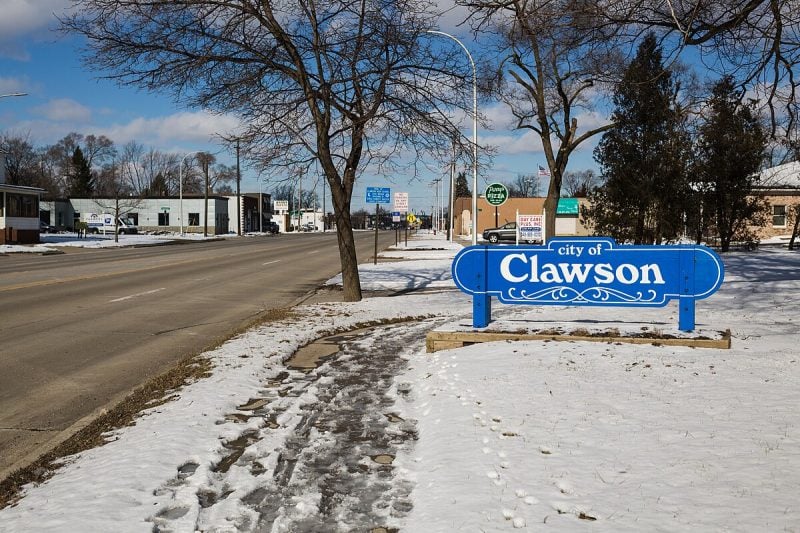
Clawson is a small city in Oakland County with a population of approximately 11,825 residents. This Detroit suburb offers a dense suburban atmosphere where most residents own their homes.
The city stands out for its affordability and safety. Home prices align with Michigan’s state average around $196,000. The poverty rate sits at 7.7%, which is 45% lower than the national average.
Clawson features excellent schools and low crime rates. The walkable downtown area contains numerous restaurants, coffee shops, and parks. Residents enjoy community events like the annual Fourth of July Festival.
The typical household earns $71,376 annually, above the national median of $67,500. Its convenient location near Detroit provides access to metropolitan amenities while maintaining a small-town feel.
The city has earned recognition as one of Michigan’s most livable places due to its combination of affordable housing, quality schools, and active community life.
29. West Bloomfield

West Bloomfield Charter Township sits in Oakland County as a suburb of Detroit with 65,618 residents. The community ranks 722 out of 6,804 best suburbs nationwide.
Housing costs exceed Michigan’s state average of $196,062. Most residents own their homes in this sparse suburban environment.
The township offers excellent educational opportunities with high-ranking public and private schools. Safety ratings remain strong compared to other Michigan communities.
West Bloomfield provides easy access to Detroit and Ann Arbor. Local amenities include parks, recreation facilities, and shopping centers.
Money magazine recognized West Bloomfield among its Best Places to Live in 2020. The area attracts residents seeking outdoor activities and higher incomes.
The community ranks 910 out of 6,799 best suburbs for raising families. Residents enjoy a mix of suburban living with urban accessibility.
28. Birmingham
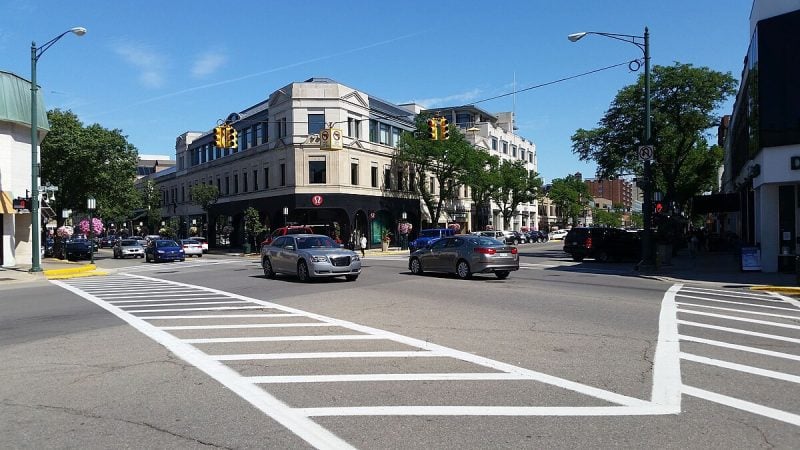
Birmingham stands as one of Michigan’s most desirable communities in Oakland County. The city consistently earns high rankings for quality of life across multiple rating systems.
This diverse city features a thriving business and cultural district. Visitors and residents enjoy year-round activities and amenities throughout the area.
Birmingham’s neighborhoods attract families and professionals seeking upscale living. The community maintains a strong sense of safety and engagement among residents.
Housing costs exceed Michigan’s average, reflecting the area’s desirability. The real estate market remains competitive due to high demand for homes in Birmingham.
The city offers excellent access to employment opportunities and entertainment options. Birmingham combines suburban tranquility with urban conveniences for residents.
Local schools and public services maintain solid reputations within the region. The community provides a well-rounded living experience for various demographics.
27. Marquette

Marquette sits on Lake Superior’s south shore in Michigan’s Upper Peninsula. The city offers residents access to beaches, hiking trails, and numerous outdoor recreational opportunities.
Northern Michigan University brings 7,000 students to the area, creating a college town atmosphere. The university contributes to local culture and provides educational resources for the community.
The regional medical center serves as a major employer and healthcare hub for the surrounding region. This facility supports both residents and visitors in the area.
Harlow Farms represents one of the newer residential developments in Marquette. These homes were built in 2007 and later, offering modern housing options integrated with the natural landscape.
The city maintains lower crime rates compared to many Michigan communities. Housing quality varies significantly across different neighborhoods, with median home values reflecting these differences.
Marquette’s location places it further north than Montreal, Canada, resulting in a cooler climate year-round.
26. Lansing
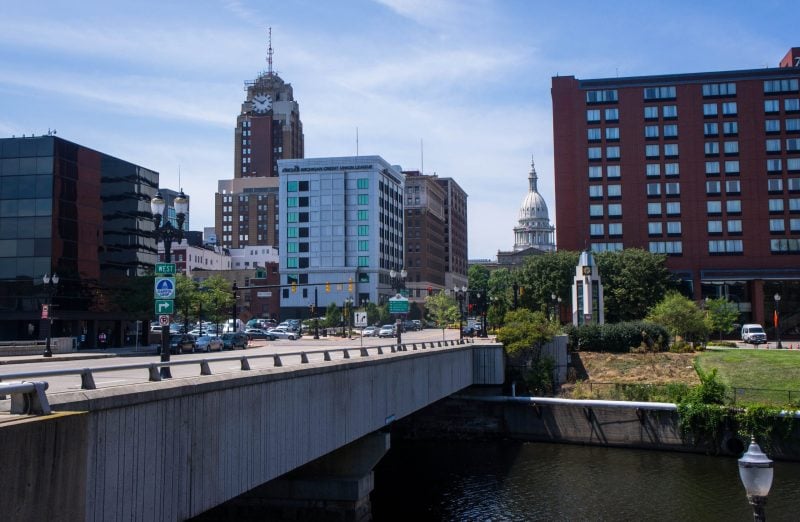
Lansing serves as Michigan’s capital city and offers diverse living opportunities for residents. The city ranked among six Michigan cities on national best places to live lists, positioning itself above larger cities like Detroit and Flint.
Downtown Lansing provides urban living with convenient access to government buildings and cultural attractions. The area appeals to professionals working in state government and those who prefer city amenities.
Moores River Drive features upscale homes along the Grand River, attracting residents seeking premium housing options. The Eastside neighborhood offers diverse housing choices with strong community connections.
Groesbeck provides quiet residential living with affordable housing and quality schools. This area suits families looking for suburban comfort within the capital city.
The Lansing metro area benefits from multiple factors including cost of living considerations, educational opportunities, and crime rates when evaluated for livability rankings.
25. Sault Ste. Marie
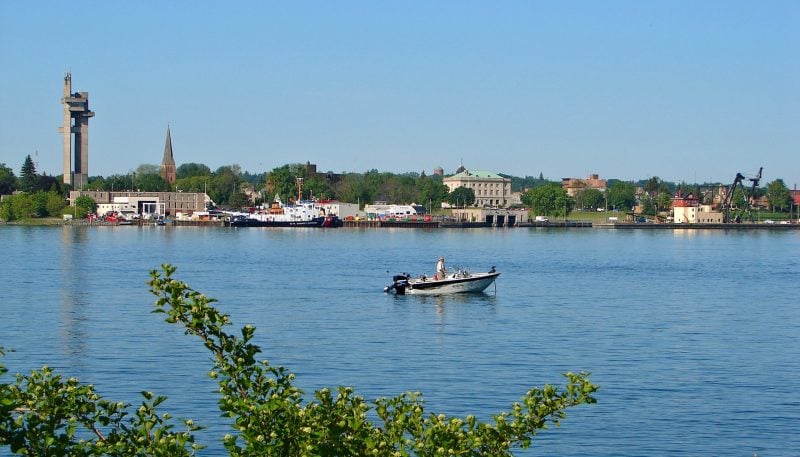
Sault Ste. Marie sits in Michigan’s Upper Peninsula with a population of approximately 13,373 residents. The city borders Canada and ranks as one of the oldest settlements in the Midwest.
Home prices remain significantly below Michigan’s state average of $196,062. Most residents own their homes in this dense suburban community.
The area offers abundant parks and natural recreation opportunities. Residents enjoy access to nearby lakes, forests, and nature trails throughout the region.
Sault Ste. Marie receives high rankings for its cost of living, which earns an A+ grade. The low cost of living allows residents to maintain a higher quality of life.
The city provides a quiet, small-town atmosphere with local shops and restaurants. Its location near the St. Marys River offers fishing opportunities for outdoor enthusiasts.
24. Dearborn

Dearborn ranks as the second-best city to live in Michigan out of 642 cities. The city offers diverse neighborhoods that cater to different lifestyles and preferences.
West Dearborn features a vibrant downtown area with numerous shops, restaurants, and cultural attractions. This area combines residential and commercial properties effectively.
East Dearborn hosts many Arab-American communities. Residents enjoy unique cultural experiences and authentic Middle Eastern cuisine throughout this neighborhood.
The city maintains lower crime rates compared to many Michigan communities. Housing quality varies significantly across different neighborhoods within Dearborn.
Dearborn provides residents with numerous amenities and attractions. The city’s diverse population creates a rich cultural environment for families and professionals.
23. Rochester Hills
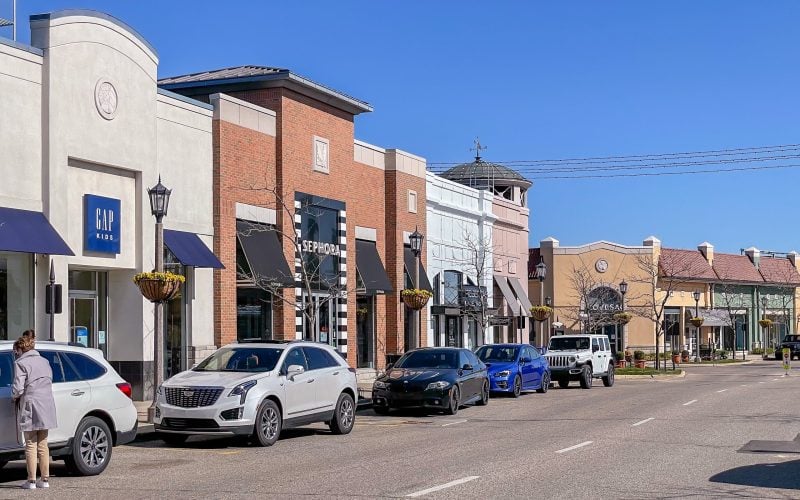
Rochester Hills consistently ranks among Michigan’s top places to live. U.S. News & World Report named it the best place to live in Michigan and ranked it ninth nationally in 2025.
This Detroit suburb attracts families with its high median income and strong local economy. The city features thriving family-run businesses that contribute to its economic stability.
Home prices in Rochester Hills exceed Michigan’s state average of $196,062. The higher cost reflects the area’s desirability and quality amenities.
The climate offers pleasant summers, with August, July, and June being the most comfortable months. Winter months of January and February tend to be less favorable weather-wise.
Rochester Hills provides residents with low crime rates and family-friendly neighborhoods. The combination of safety, economic opportunity, and suburban amenities makes it attractive to professionals and families seeking quality living near Detroit.
22. Saline
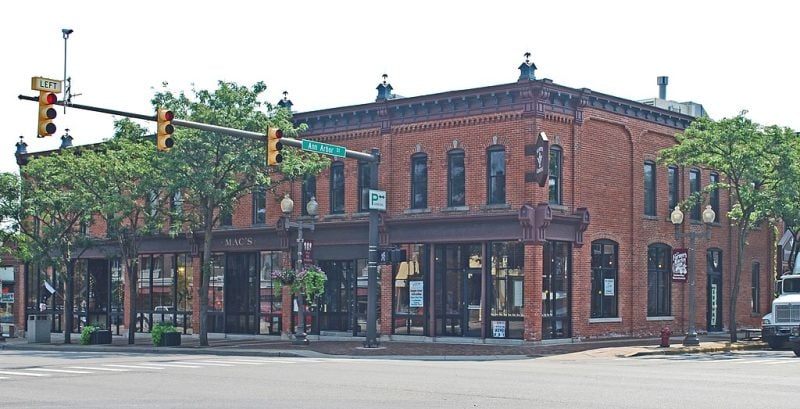
Saline is a Detroit suburb located in Washtenaw County with a population of 8,976. The city sits 40 miles west of Detroit in Southeast Michigan.
Home prices in Saline exceed the state average of $196,062. Most residents own their homes in this dense suburban community.
The city offers excellent schools and numerous parks and trails. An active arts community features galleries, theater companies, and music venues throughout the area.
Young professionals make up a significant portion of Saline’s population. Residents tend to lean conservative politically.
Saline provides small town hospitality combined with modern amenities. The city offers beautiful neighborhoods, open spaces, and access to lakes for outdoor recreation.
The community consistently ranks among the best places to live in Michigan. Southeast Michigan suburbs in Oakland and Washtenaw counties frequently dominate top living destination lists.
21. Portage
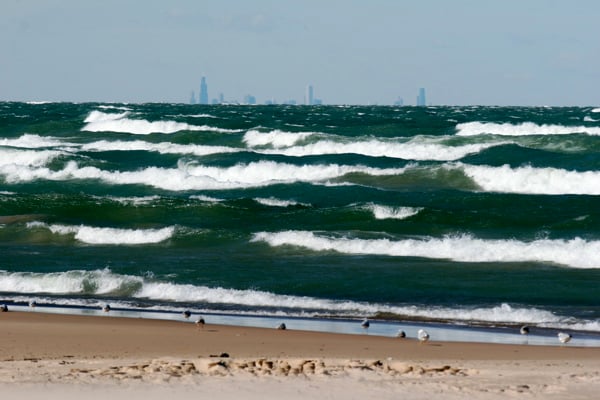
Portage ranks as one of the best places to live in Michigan, earning 40th place among 339 best suburbs statewide. The city offers residents a dense suburban feel with extensive parks throughout the community.
With a population of 49,224, Portage maintains a poverty rate of 7.8%, which sits 44% below the national average. The typical household earns $66,571 annually, closely matching the national median income.
Several neighborhoods stand out for their quality and amenities. Woodbridge Hills features a planned community with diverse housing options. Amberly offers well-maintained neighborhoods near quality schools.
Westfield provides newer homes with convenient shopping access. Lake Center appeals to those seeking lakefront properties and a more rural atmosphere.
The city’s housing market reflects its desirability, with neighborhoods varying significantly in quality and value across different areas of Portage.
20. Midland
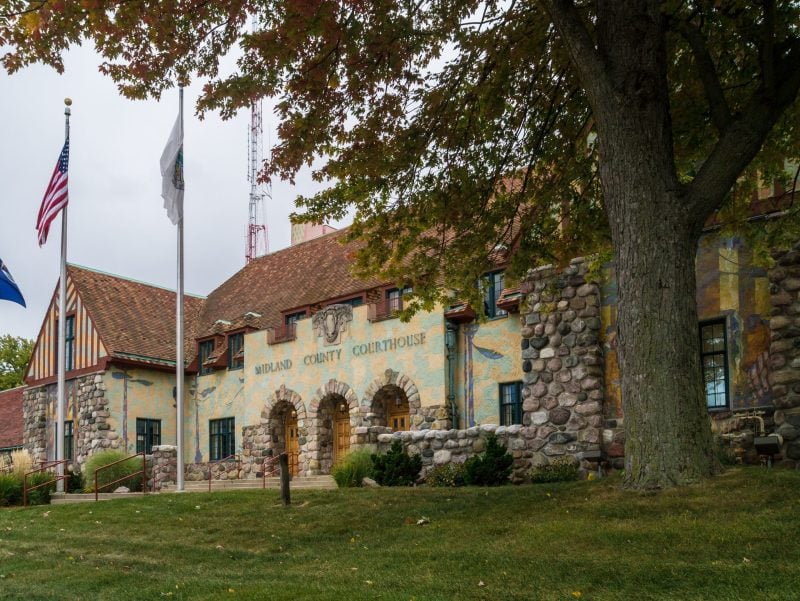
Midland offers residents access to exceptional recreational venues including Dow Gardens and Whiting Forest. The city provides diverse employment opportunities through institutions like Northwood University and various manufacturing companies.
This mid-size metro area sits within Michigan’s lakes and woodlands region. Primary industries include tourism and manufacturing, creating a stable economic foundation for residents.
Midland County residents benefit from good public schools and reasonable cost of living compared to larger metropolitan areas. The city combines small-town charm with access to cultural amenities and outdoor activities.
The community features well-maintained neighborhoods with varying home values throughout the city. Residents enjoy four-season recreation opportunities and proximity to Michigan’s natural attractions.
Midland consistently appears on various best places to live rankings for Michigan cities. The area attracts families and professionals seeking quality of life in a smaller urban setting.
19. South Lyon
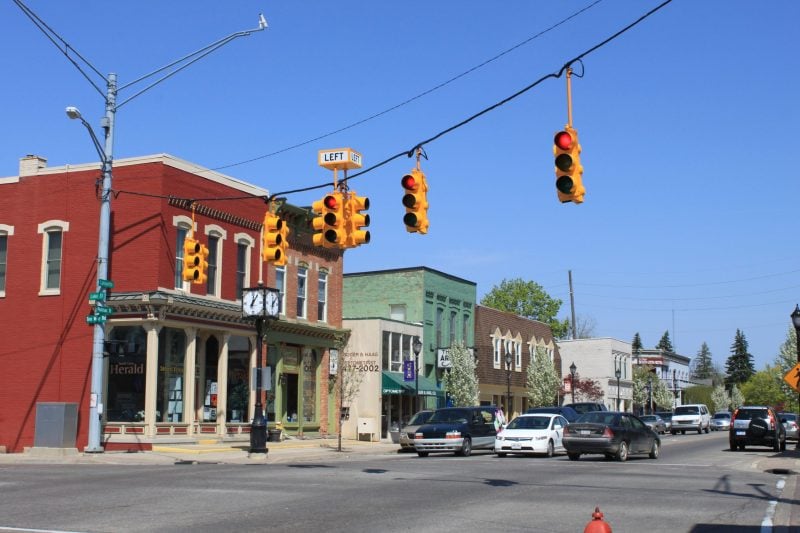
South Lyon is a small city in Oakland County with approximately 11,825 residents. The community sits southwest of Detroit and spans 3.74 square miles.
The city offers top-rated schools that attract families to the area. Most residents own their homes in this dense suburban environment.
South Lyon provides access to numerous parks and outdoor recreational opportunities. Kensington Metropark offers distinctive natural environments for outdoor activities.
The community hosts an annual Summerfest each July featuring music and art. Mill Race Historical Village adds cultural appeal to the area.
Major highways border the city, providing convenient access to surrounding areas. The location connects residents to Brighton, Milford, Novi, and other nearby communities.
South Lyon maintains small-town charm while offering modern amenities. The growing real estate market reflects the area’s increasing popularity among homebuyers seeking suburban living near Detroit.
18. Fenton
Fenton offers residents a dense suburban feel with a population of approximately 11,950 people. The city sits primarily in Genesee County with small portions extending into Oakland County and Livingston County.
Most residents own their homes rather than rent. The community attracts both families and young professionals seeking a suburban lifestyle.
Fenton provides numerous parks for outdoor recreation and community activities. The city was originally established in 1834 and has maintained its small-town character while growing.
AreaVibes gives Fenton a livability score of 77 out of 100. This score ranks the city at #110 in Michigan for overall quality of life.
The housing market varies significantly across different neighborhoods within Fenton. Areas with higher home values typically correlate with lower crime rates and better amenities.
17. Ada
Ada offers residents a peaceful suburban lifestyle in Kent County. The community sits just southeast of Grand Rapids, providing easy access to urban amenities while maintaining its small-town character.
The area features excellent schools that attract families seeking quality education options. Housing consists primarily of single-family homes with spacious lots and well-maintained neighborhoods.
Ada’s location along the Thornapple River creates scenic natural settings. Residents enjoy walking trails, parks, and outdoor recreational opportunities throughout the year.
The community maintains low crime rates and a strong sense of safety. Local businesses and restaurants serve the area while larger shopping centers remain accessible in nearby Grand Rapids.
Ada appeals to professionals who work in Grand Rapids but prefer quieter residential living. The short commute makes it practical for those seeking suburban comfort without sacrificing career opportunities.
16. Harrison Township
Harrison Township offers residents a quality living experience in southeastern Michigan. The community ranks 34th in the state for livability with an overall score of 70 out of 100.
Home prices in Harrison Township align closely with Michigan’s state average of $196,062. This pricing makes the area accessible for various income levels.
The township provides numerous outdoor recreational opportunities. Residents enjoy camping, fishing, golfing, and hiking throughout the year.
Local amenities include quaint shops and restaurants that create a welcoming community atmosphere. The area maintains a friendly environment that helps newcomers integrate easily.
Harrison Township’s location offers both suburban comfort and access to outdoor activities. The community attracts people seeking a balanced lifestyle with reasonable housing costs and recreational options.
15. Petoskey
Petoskey sits along Lake Michigan’s shores in northern Michigan with a population of approximately 5,850 residents. The city combines scenic lakefront views with a charming downtown area that attracts both families and retirees.
The community offers a dense suburban atmosphere where most residents own their homes. Downtown features numerous restaurants, coffee shops, and parks within walking distance of residential neighborhoods.
Petoskey’s location provides access to year-round outdoor activities and four distinct seasons. The area maintains lower crime rates compared to many Michigan cities.
Housing options range from single-family homes in established neighborhoods to active retirement communities. Many developments offer amenities like golf courses and tennis facilities.
The city serves as an affordable option for retirees seeking small-town living with modern conveniences. Harbor Springs, a nearby affluent community, provides additional upscale housing alternatives for those seeking premium lakefront properties.
14. Caledonia
Caledonia is a small suburb of Grand Rapids with a population of 1,936 residents. The community sits in Kent County and offers a sparse suburban feel with small-town charm.
Most residents own their homes in this family-friendly area. The town features numerous parks and green spaces that provide outdoor recreation opportunities.
Home prices average $238,700, which is higher than Michigan’s state average. The growing housing market reflects the area’s desirability and development.
Caledonia experiences a four-season climate with pleasant summers and cold winters. August, July, and June offer the most comfortable weather conditions.
The town is known for the Paul Henry Trail and maintains an attractive downtown area. Residents enjoy rural, comfortable living while remaining close to Grand Rapids amenities.
13. Holland
Holland sits on Michigan’s Lower Peninsula near Lake Michigan’s eastern shore. The city has a population of approximately 34,000 residents and ranks among Michigan’s most desirable places to live.
The community offers a dense suburban atmosphere where most residents own their homes. Holland maintains an above-average quality of life with numerous parks and recreational facilities throughout the area.
Lake Michigan’s proximity provides year-round outdoor recreation opportunities. Residents enjoy extensive bike trails and well-maintained nature areas within easy reach of downtown.
The city’s poverty rate of 10.6% falls below the national average. However, the typical household income of $58,796 sits slightly under the national median.
Holland’s downtown area attracts families and young professionals seeking a balanced lifestyle. The combination of natural amenities, community infrastructure, and residential stability makes it an attractive option for those considering relocation within Michigan.
12. Chelsea
Chelsea sits 16 miles west of Ann Arbor, covering 3.67 square miles with approximately 5,400 residents. This former village became a city in 2004.
The community offers small-town charm while maintaining access to urban amenities. Downtown features local restaurants, shops, and entertainment options that cater to families and professionals.
Home prices in Chelsea exceed Michigan’s state average of $196,062. The housing market reflects strong demand for this desirable location.
Residents benefit from proximity to the University of Michigan and Ann Arbor’s cultural attractions. The location provides easy access to medical facilities and educational opportunities.
Chelsea balances peaceful residential living with recreational activities. The compact size creates a walkable environment where neighbors know each other.
The town attracts people seeking quiet suburban life without sacrificing convenience. Its position between rural areas and Ann Arbor appeals to commuters and retirees alike.
11. Traverse City
Traverse City sits on the eastern shore of Lake Michigan’s Grand Traverse Bay. The city serves as the largest urban center between Detroit and Milwaukee with approximately 15,000 residents.
The area attracts visitors and residents with its blend of agricultural charm and urban amenities. Cherry orchards and vineyards define the surrounding landscape, contributing to the region’s agricultural identity.
Housing costs exceed Michigan’s state average of $196,062. The real estate market remains active in 2025, with neighborhoods offering lifestyle amenities and long-term value seeing increased interest.
Outdoor recreation opportunities abound due to the lakefront location and nearby natural areas. The city provides cultural attractions including theaters and local businesses that showcase regional products.
Traverse City ranks as the 9th best place to live in Michigan according to recent evaluations. The community balances small-town character with access to recreational and cultural resources.
10. Grosse Pointe
Grosse Pointe ranks as the second-best place to live in Michigan according to BestPlaces.net. This affluent community offers residents an excellent quality of life with numerous amenities and attractions.
The city earned the number six spot among Michigan’s best suburbs. It also holds the distinction of being the top place to live in Wayne County.
Home prices in Grosse Pointe exceed the Michigan state average of $196,062. The higher costs reflect the desirability and quality of the neighborhoods.
Grosse Pointe Shores specifically ranks first among 624 best places to retire in Michigan. The area also places 26th for suburbs with the best public schools statewide.
Residents enjoy access to Lake St. Clair and proximity to Detroit’s cultural offerings. The community maintains well-preserved historic architecture and tree-lined streets that contribute to its appeal.
9. Okemos
Okemos ranks as Michigan’s top place to live according to Niche’s 2025 rankings. This Lansing suburb earned the 19th spot nationally among America’s best places to live.
The community has a population of 25,503 residents in Ingham County. Most residents own their homes and enjoy a dense suburban atmosphere.
Young professionals make up a significant portion of the population. Residents tend to hold moderate political views across the community.
Okemos offers numerous restaurants and parks for recreation. The area provides ample dining and outdoor activity options for families.
The public school system receives high ratings for educational quality. Parents can expect strong academic programs for their children.
Home prices exceed Michigan’s state average of $196,062. The higher costs reflect the desirability and quality of the area’s neighborhoods.
8. Farmington Hills
Farmington Hills sits in Oakland County with a population of 83,316 residents. The city consistently ranks among Michigan’s top places to live.
WalletHub ranked Farmington Hills 11th out of 100 cities in its 2020 Best Cities to Live in America list. The community offers a dense suburban atmosphere where most residents own their homes.
Green Hill features upscale properties with large homes and well-maintained neighborhoods. Woodcreek attracts families with its excellent schools and parks.
The city provides highly rated public schools and maintains low crime rates. Residents enjoy numerous restaurants, coffee shops, and recreational areas throughout the community.
Farmington Hills offers proximity to Detroit for expanded employment opportunities while maintaining its suburban character. The diverse community provides strong cultural offerings and maintains a safe environment for families.
7. Royal Oak
Royal Oak stands as one of Michigan’s premier suburban destinations with a population of 57,880 residents. Located in Oakland County just north of Detroit, this vibrant community offers an ideal blend of urban amenities and suburban comfort.
The city features numerous high-quality neighborhoods that cater to different lifestyles. Downtown Royal Oak attracts those seeking an urban atmosphere with walkable streets and entertainment options.
Vinsetta Park provides a quieter residential setting with well-maintained homes. Northwood showcases mid-century modern architecture along tree-lined streets that appeal to design enthusiasts.
Residents enjoy access to excellent schools, numerous parks, and recreational facilities. The downtown area buzzes with bars, restaurants, coffee shops, and nightlife venues.
Royal Oak’s central location provides convenient access to Detroit and other metropolitan areas. The combination of economic growth, quality amenities, and diverse housing options makes it attractive to young professionals, families, and retirees alike.
6. Bloomfield Hills
Bloomfield Hills stands as one of Michigan’s most prestigious communities. This small Oakland County city maintains a population of approximately 4,400 residents.
The area consistently ranks among the best places to live in the United States. Home values significantly exceed Michigan’s state average of $196,062.
Residents enjoy a suburban-rural atmosphere with abundant green spaces and parks. The community offers excellent public schools and access to higher education institutions.
Most residents own their homes in this affluent suburb of Detroit. The close-knit community fosters friendly relationships among neighbors.
Bloomfield Hills provides convenient access to shopping and dining options. The city experiences a four-season climate typical of southeastern Michigan.
The area attracts residents seeking high-quality amenities and luxurious housing options. Its reputation for excellence draws families prioritizing education and community involvement.
5. East Lansing
East Lansing stands as home to Michigan State University and offers a vibrant college town atmosphere. The city attracts students, young professionals, and families with its diverse cultural opportunities and educational excellence.
The Bailey neighborhood serves as the central hub with popular shops, restaurants, and entertainment venues. This area features a mix of single-family homes, apartments, and condos appealing to various residents.
East Lansing ranks highly for diversity within Ingham County and maintains relatively low living costs. The city provides access to Big Ten academics and athletics while supporting a bustling community environment.
Housing options vary significantly across the city’s 25 unique neighborhoods. Each area caters to different preferences and budgets, from university-adjacent properties to family-oriented residential zones.
The city combines small-town charm with university resources, creating opportunities for cultural events and educational programs year-round.
4. Troy
Troy consistently ranks among Michigan’s top destinations for residents seeking quality living. The city earned the #2 spot for Best Places to Live in Michigan and ranks #5 nationally among best small cities.
Located in Oakland County, Troy offers exceptional public schools and low crime rates. The poverty rate stands at just 4.9%, significantly below the national average.
Residents enjoy a strong economic foundation with median household earnings of $104,132 annually. This income level exceeds the national median by substantial margins.
The city provides diverse neighborhoods with varying home values and amenities. Quality of life remains consistently high across different areas, though housing costs reflect the desirability of specific locations.
Troy’s combination of educational excellence, economic opportunity, and community safety makes it attractive to families and professionals alike.
3. Novi
Novi stands out as one of Michigan’s premier suburbs, located in Oakland County with a population of 66,224 residents. The city offers a dense suburban atmosphere where most residents own their homes.
The community boasts excellent schools and maintains a reputation for diversity. Residents enjoy access to numerous restaurants, coffee shops, and parks throughout the area.
Economically, Novi performs well above state averages. The typical household earns $93,943 annually, significantly higher than the national median of $67,500. The poverty rate remains low at 3.4%.
Housing costs reflect the area’s desirability, with home prices exceeding Michigan’s state average of $196,062. This premium reflects strong market demand and the community’s appeal.
Novi consistently ranks among Michigan’s top places to live, earning recognition as a top-200 destination nationally. The city combines suburban comfort with urban amenities, making it attractive to families and professionals seeking quality of life.
2. Grand Rapids
Grand Rapids consistently ranks among Michigan’s top cities for livability. The city holds the #1 position in Michigan and ranks #16 nationally for overall quality of life.
Residents enjoy a diverse mix of neighborhoods, each offering distinct character and amenities. Popular areas include Millbrook and Ottawa Hills, which consistently rank among the best neighborhoods in the city.
The metro area provides excellent educational opportunities and maintains reasonable living costs. Public schools receive strong ratings, while the local job market offers stability across various industries.
Grand Rapids balances urban amenities with accessible outdoor recreation. The city features numerous parks, cultural attractions, and dining options that cater to different lifestyles.
Crime rates remain relatively low compared to other major Michigan cities. The community maintains a strong sense of civic engagement and neighborhood pride throughout its various districts.
1. Ann Arbor
Ann Arbor consistently ranks as one of the best places to live in Michigan and across the United States. The city has a population of 121,179 residents located in Washtenaw County.
The city offers an urban-suburban mix that appeals to diverse residents. Most people rent their homes rather than own them.
Ann Arbor is home to the University of Michigan, which contributes to its vibrant cultural scene. The city features numerous restaurants, coffee shops, and parks throughout its neighborhoods.
The area is developing into an emerging tech hub. Many technology workers are finding startup opportunities and relocating to Ann Arbor for career advancement.
Living costs in Ann Arbor are higher than most other Michigan cities. However, residents benefit from excellent educational opportunities and strong job markets that help offset the increased expenses.
Key Factors That Make a Michigan City Desirable
Michigan cities attract residents through four critical elements that shape daily life and long-term satisfaction. These factors determine both immediate living conditions and future opportunities for individuals and families.
Cost of Living and Affordability
Housing costs represent the largest expense for most Michigan residents. Cities with median home prices between $200,000-$300,000 offer the best balance of affordability and quality neighborhoods.
Housing Market Indicators:
Property taxes ranging from 1.2% to 2.8% annually
Rental markets with $800-$1,400 monthly averages
Utility costs 5-15% below national averages
Transportation expenses vary significantly across Michigan cities. Urban areas like Detroit offer public transit systems that reduce vehicle dependency. Suburban communities require personal transportation but provide shorter commute times.
Grocery and healthcare costs remain relatively stable statewide. Cities near agricultural regions often feature lower food prices. Healthcare accessibility affects both cost and quality of life outcomes.
Quality of Local Schools
School district performance directly impacts property values and family decisions. Michigan uses state assessments and graduation rates to evaluate educational quality.
Top-performing districts maintain student-teacher ratios below 20:1. These schools offer advanced placement courses, STEM programs, and college preparation resources. Districts with consistent funding provide better facilities and technology access.
Private school options supplement public education in many communities. Cities with diverse educational choices attract families seeking specific learning environments.
Higher education institutions boost local economies and cultural offerings. Communities near universities benefit from research facilities, healthcare systems, and entertainment venues.
Job Market and Economic Stability
Employment diversity protects communities from economic downturns. Cities with multiple industries provide better job security and career advancement opportunities.
Key Economic Sectors:
Manufacturing and automotive
Healthcare and social services
Technology and professional services
Tourism and hospitality
Unemployment rates below 4% indicate healthy job markets. Cities with major employers or business districts offer higher average wages. Remote work trends have expanded employment options for residents in smaller communities.
Entrepreneurship support through business incubators and small business resources creates additional economic opportunities. Cities investing in downtown revitalization attract new businesses and residents.
Access to Outdoor Activities
Michigan’s geography provides year-round recreational opportunities that enhance quality of life. Cities near the Great Lakes offer beaches, boating, and water sports during warmer months.
Winter activities include skiing, snowmobiling, and ice fishing. Communities with maintained trail systems support hiking, biking, and cross-country skiing. State parks within 30 minutes of residential areas provide convenient nature access.
Popular Outdoor Features:
Great Lakes shoreline access
State forest hiking trails
Inland lake chains
Golf courses and country clubs
Urban parks and green spaces offer recreation without traveling far from home. Cities with comprehensive park systems provide playgrounds, sports facilities, and community gathering spaces.
Fishing and hunting opportunities attract outdoor enthusiasts. Michigan’s diverse ecosystems support various wildlife species and fishing conditions throughout the state.
Understanding Michigan’s Regional Diversity
Michigan offers distinct lifestyle experiences across urban centers like Detroit and Grand Rapids, charming small towns throughout the state, and waterfront communities along the Great Lakes. Each region provides unique advantages for residents seeking different living environments.
Urban vs. Suburban Lifestyles
Detroit stands as Michigan’s largest urban center, offering extensive cultural attractions, diverse job markets, and walkable neighborhoods. The city provides access to professional sports venues, world-class museums, and a growing downtown district.
Grand Rapids serves as the state’s second-largest city with a thriving arts scene and craft brewery culture. The urban core features revitalized neighborhoods and proximity to major employers in healthcare and manufacturing.
Ann Arbor combines university town energy with urban amenities. Residents benefit from cultural events, restaurants, and educational opportunities centered around the University of Michigan campus.
Suburban communities like Birmingham, Troy, and Bloomfield Hills offer planned neighborhoods with excellent schools. These areas provide family-friendly environments while maintaining access to urban employment centers through reasonable commuting distances.
Rural Charm and Small Town Benefits
Northern Michigan towns like Traverse City and Petoskey deliver small-town atmospheres with lower cost of living. These communities feature locally-owned businesses, farmers markets, and tight-knit social networks.
Agricultural regions throughout mid-Michigan offer expansive properties and rural tranquility. Residents enjoy larger lot sizes, minimal traffic, and connection to farming communities.
Small lakeside towns provide year-round recreation opportunities. Many feature historic downtowns with antique shops, local restaurants, and community festivals that strengthen neighborhood bonds.
Rural areas typically offer shorter commute times within town limits and reduced urban stressors. Housing costs remain significantly lower compared to metropolitan areas.
Proximity to Lakes and Natural Spaces
Great Lakes shoreline communities provide direct beach access and water recreation. Towns along Lake Michigan, Lake Huron, and Lake Superior offer swimming, boating, and fishing opportunities within walking distance of residential areas.
Michigan’s inland lake regions feature over 11,000 lakes for year-round activities. Communities around these waters support ice fishing, snowmobiling, and summer water sports.
State and national forests cover large portions of the Upper Peninsula and northern Lower Peninsula. Residents access hiking trails, hunting grounds, and camping areas without extensive travel.
Waterfront properties command premium prices but deliver exceptional lifestyle benefits. Many lakeside communities maintain public access points and marinas for boat owners.





